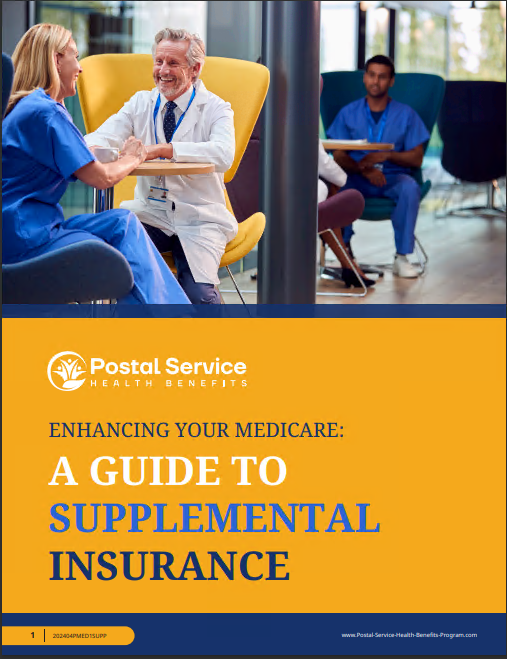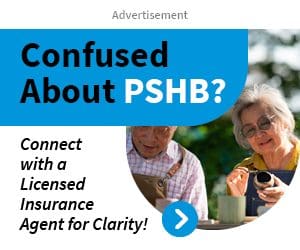Key Takeaways
-
In 2025, Medicare-eligible USPS retirees now receive prescription drug coverage through an integrated Medicare Part D Employer Group Waiver Plan (EGWP) under PSHB.
-
Opting out of Medicare Part D could result in a loss of PSHB prescription drug coverage and limited re-enrollment opportunities.
Understanding the New Landscape of USPS Drug Coverage
If you’re a USPS retiree or employee approaching retirement, 2025 brings a major change: prescription drug coverage is no longer offered the way it used to be. With the launch of the Postal Service Health Benefits (PSHB) Program, your drug benefits are now integrated with Medicare Part D through a special employer arrangement called an Employer Group Waiver Plan (EGWP). This shift is intended to align USPS benefits more closely with Medicare’s drug coverage structure.
Let’s break down what this means for you.
What Is Medicare Part D EGWP and Why It Matters
The EGWP is a Medicare Part D plan offered by employers, including the USPS, to provide prescription drug coverage that meets Medicare standards. This change applies to Medicare-eligible USPS retirees and their eligible family members.
Here’s why this transition is significant:
-
You are automatically enrolled in the Medicare Part D EGWP through your PSHB plan, unless you choose to opt out.
-
The integrated plan helps lower your out-of-pocket drug costs.
-
You get access to a broader pharmacy network than traditional FEHB plans offered in the past.
The $2,000 Annual Out-of-Pocket Cap in 2025
One of the biggest Medicare drug coverage changes in 2025 is the new $2,000 annual out-of-pocket maximum for prescription medications under Medicare Part D.
What this cap means for you:
-
Once you’ve paid $2,000 in out-of-pocket costs for covered drugs, your plan will cover 100% of your additional medication costs for the rest of the year.
-
This includes deductibles, copayments, and coinsurance.
-
The cap provides meaningful financial relief, especially if you rely on high-cost medications.
You Must Be Enrolled in Medicare Part B to Keep PSHB Drug Coverage
If you’re eligible for Medicare, remaining enrolled in Medicare Part B is a requirement for keeping your PSHB drug coverage through the EGWP.
If you choose not to enroll in Part B:
-
You will be automatically disenrolled from the Medicare Part D EGWP.
-
This will remove your prescription drug coverage under your PSHB plan.
-
Re-enrollment opportunities may be limited or unavailable unless you qualify for a future Special Enrollment Period.
Key Enrollment Milestones and Deadlines
Here are the timelines you need to know:
-
Special Enrollment Period (SEP): Ran from April 1 through September 30, 2024, allowing certain retirees to enroll in Medicare Part B without a late penalty.
-
PSHB Open Season: Held from November to December 2024, where you selected your PSHB plan. Your drug coverage began January 1, 2025, if enrolled.
-
Ongoing Annual Enrollment: Occurs each year between November and December, allowing you to reassess and switch PSHB plans as needed.
What Happens If You Opt Out of the Medicare Part D EGWP
You have the right to opt out of the integrated Medicare drug coverage, but there are important consequences to understand:
-
You lose drug coverage under your PSHB plan.
-
Your ability to re-enroll in the EGWP is restricted and not guaranteed.
-
You may face higher out-of-pocket drug costs without the $2,000 cap.
Unless you have other creditable drug coverage—such as VA drug benefits—opting out is not recommended.
Drug Formularies and Pharmacy Networks Are Expanding
With the switch to Medicare EGWP coverage, you now have:
-
A nationwide network of pharmacies, often larger than those used under FEHB plans.
-
Access to a formulary designed to meet Medicare standards while offering comprehensive options.
-
Continued mail-order options for maintenance medications.
It’s a good idea to review your specific plan’s formulary annually to ensure your medications are covered.
Insulin Cost Cap and Tiered Pricing Still Apply
In addition to the $2,000 cap, other cost protections continue to apply in 2025:
-
Insulin costs are limited to $35 for a month’s supply under Medicare.
-
Tiered copayment systems still apply, which means generics usually cost less than brand-name or specialty drugs.
Understanding how your drugs are categorized in your plan’s formulary can help you manage costs.
You’re Not Affected If You’re Not Medicare Eligible Yet
If you’re a USPS retiree or dependent who isn’t yet eligible for Medicare:
-
You continue to receive prescription drug coverage directly through your PSHB plan.
-
Once you become Medicare-eligible, you must enroll in Medicare Part B to continue PSHB drug coverage.
-
At that point, you will be auto-enrolled into the Medicare Part D EGWP unless you decline.
This automatic transition is designed to be seamless—but reviewing your plan materials when you near eligibility is essential.
Other Federal Benefits Remain Unchanged
The transition to PSHB with Medicare drug integration only affects your health and prescription benefits. It does not change your:
-
Dental and vision coverage through FEDVIP
-
Life insurance benefits through FEGLI
-
Long-term care insurance under FLTCIP
You still maintain full access to these programs separately.
Reimbursement and Coordination with Medicare
Certain PSHB plans may offer:
-
Reimbursement for part or all of your Medicare Part B premium
-
Waived or reduced deductibles if you are enrolled in both PSHB and Medicare
-
Lower copays and better drug pricing due to Medicare coordination
These features vary by plan, so it’s important to review plan brochures carefully each year.
Stay Alert to Annual Notices and Plan Changes
Each fall, your plan will send you an Annual Notice of Change (ANOC), which outlines:
-
Any changes to the formulary
-
Updated pharmacy network details
-
New copayments, coinsurance, or deductibles
You should read this document thoroughly to avoid surprises in January.
Why This Change Was Made
The PSHB shift with integrated Medicare drug coverage was part of broader reform efforts to:
-
Lower long-term healthcare costs for USPS retirees
-
Align USPS health benefits with Medicare’s model
-
Simplify drug coverage while improving financial protection
Although the transition requires some adjustment, the new system is designed to offer better value and more predictable costs.
Where You Can Get Help
If you have questions or concerns about your Medicare drug coverage through PSHB:
-
Review the OPM and PSHB program websites for updated resources
-
Call the PSHB Navigator Help Line at 1-833-712-7742
-
Speak with a licensed agent for personalized help
Understanding your options now helps you avoid last-minute decisions and keep your coverage on track.
Staying Ahead of Drug Coverage Changes
The new Medicare drug coverage structure under PSHB isn’t just a policy change—it’s a new way of planning for your healthcare in retirement. You’ll need to:
-
Stay aware of your Medicare eligibility and enrollment status
-
Review your plan options every fall
-
Evaluate your medications and confirm they’re covered
-
Reach out for help if anything is unclear
This is the best time to make informed decisions that support your health and your budget. If you need guidance, don’t hesitate to get in touch with a licensed agent listed on this website for professional advice.







